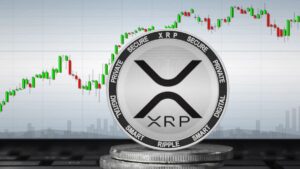TL;DR
- The halving of Bitcoin mining rewards has significantly affected miners income.
- The temporary increase in transaction fees provided relief, but these fees have decreased again.
- There is a possibility that miners will be forced to sell their BTC reserves, which could negatively impact the market.
The recent halving of Bitcoin mining rewards, an event known as a “halving”, has created a considerable impact on miners income.
This reduction, which occurs every four years, decreased daily rewards from 900 to 450 BTC, cutting miners income in half.
This loss is estimated at around $10 billion annually, based on pre-halving Bitcoin prices, according to a recent Kaiko report.
Could $BTC miners become forced sellers as fees fall?
Higher transaction fees offset lower miner rewards for firms in April, but this has since reversed.
Check out our latest debrief for the full trend:https://t.co/mvlZi2k0sv
— Kaiko (@KaikoData) May 13, 2024
Initially, higher transaction fees provided temporary relief to miners.
For example, Marathon Digital reported that transaction fees accounted for 16% of its Bitcoin revenue in April, compared to 4.5% in March.
This increase was driven by increased activity in the Runes protocol.
However, this rebound was short-lived.
As demand on the Runes protocol declined, so did transaction fees, removing the cushion that had helped mitigate the financial impact of reduced block rewards.
The decline in transaction fees has increased pressure on miners.
Many miners hold their Bitcoin reserves as current assets, meaning they are available for sale to cover operating costs.
Major companies like Marathon Digital, with 17,631 BTC valued at over $1.1 billion, and Riot Platforms, with 8,872 BTC valued at over $500 million, could be forced to sell some of their reserves.
If miners are forced to liquidate their assets to maintain operations, this could put negative pressure on the Bitcoin market, especially during the summer months when trading activity and liquidity tend to decrease.

Market Outlook for Bitcoin
While Bitcoin (BTC) miners face these challenges, the broader market is also undergoing significant changes.
In Brazil, the cryptocurrency market has shown notable growth, with trading volumes in BRL (Brazilian reals) reaching $6 billion from January to early May 2024.
This figure highlights Brazil as the largest market in Latin America and the seventh globally in terms of trade volume in fiat currency.
This growth has largely focused on stablecoins, which now account for almost half of BRL-denominated exchanges.
Additionally, ETH options markets are indicating potential volatility, with a divergence in the average strike prices for call and put options.
On the other hand, the recent launch of Bitcoin and Ether ETFs in Hong Kong has failed to stimulate the market as expected, reflecting a certain fatigue with ETF-related rallies.
Finally, Bitcoin’s correlation with US stocks has increased, standing at 0.17, indicating that BTC is increasingly being influenced by broader financial market trends.
As Bitcoin miners navigate a challenging post-halving financial environment, the cryptocurrency market continues to evolve with regional and global trends that reflect the complexity and dynamism of this ever-changing ecosystem.










